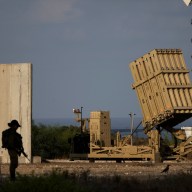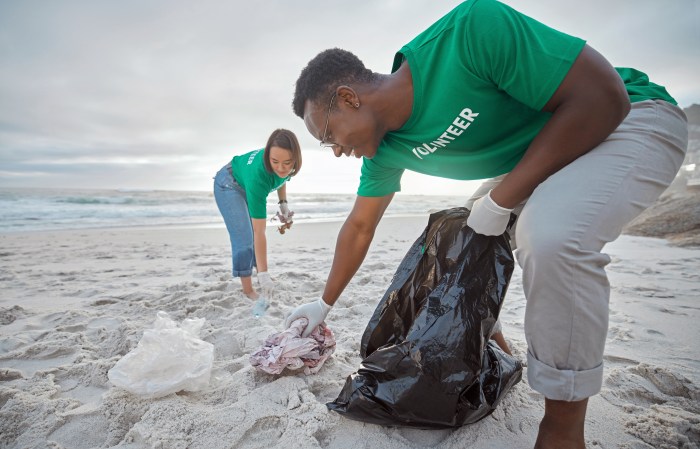View Game of Thrones filming locations in a larger map
In the bleak and dismal break between seasons of “Game of Thrones” (the most recent one lasted 10 months) what better way for fans to stay connected than by visiting one of the exotic locations where filming for the program took place?
Following are locations where the show’s incest, pillaging, and frequent death run riot. The article below is an edited version of a blog compiled by the travel site GoEuro.co.uk, and contains some spoilers.
Northern Ireland
Much of the fictitious land of Westeros is located in Northern Ireland. Winter may have just left the Emerald Isle, but given Ireland’s average 300 rainy or cloudy days a year, many of the locations filmed here were used to depict Winterfell, the North and other less sunny parts of the Seven Kingdoms.
Dark Hedges, Northern Ireland
Those who want to tread the same grounds as House Stark should explore the area of Downpatrick, County Down, where Castle Ward was used to film parts of the family home. Nearby Audley’s Castle and Woods were the location for the family’s war encampment in Season 1. Farther north you’ll find the setting for Castle Black — the abandoned Magheramorne quarry, which is under proposal to be turned into a center for adventure sports.
Nearby Redhall Estate appeared in Seasons 2 and 3 under various guises, including as the inn where Catelyn Tully captured Tyrion Lannister before taking him to her twisted sister in Eyrie. (For bonus fan points, the rock formations that make up Eyrie actually lie in Greece and had the castle grafted onto them.)
With eerie in mind, Ballymoney’s Dark Hedges provided the backdrop for the iconic Kingsroad. As one of the most photographed sites in Ireland, their dramatic appearance was perfect for the award-winning series.
It seems Ireland’s rugged terrain is pretty adaptable as a mythological setting, with Sandy Brae Path at Newry and Mourne used as the site of the twin horse statues marking the entrance to the Dothraki holy ground. There’s something especially fantastic about this area, as the Mourne Mountains are said to have inspired C.S. Lewis’ “The Chronicles of Narnia.”
Our final tip for Northern Ireland is to head to the Caves of Cushendun, County Antrim, where one of the more disturbing scenes from Season 2 was filmed: Melisandre’s birthing of the shadow baby. The area itself is quaint and scenic.
Malta
Leaving Ireland and heading south to warmer climes, we find ourselves in Malta, a landscape that constituted much of King’s Landing in Season 1. The country’s former capital, Mdina, was used to represent the central city of Westeros to great effect; the many well-preserved historical buildings fit perfectly with the theme of medieval grandeur. Local structures on the Mediterranean island, such as the Mdina Bridge, Pjazza Mesquita and Verdala Palace, are all located close to one another.
San Anton Palace, Malta
Lord Stark’s announcement to Cersei that he knew of her incestuous secret was filmed in the St. Dominic Monastery, after it was transformed into the gardens of the Red Keep. His subsequent comeuppance took place nearby at Fort Manoel. Many similar structures close by were used, such as Fort St. Angelo, where Arya chasing the cat beneath the castle was filmed.
As the capital of the Seven Kingdoms, Malta housed the Iron Throne for some time. Fittingly, one of the venues for this was the San Anton Palace, in real life a residence of the island’s president.
One of the few drawbacks of Mdina as a set is that it lies inland, unlike its seaside Westeros counterpart, and could therefore only be used to depict interior shots of the city.
Azure Window, Gozo
Just a short boat trip away, the natural backdrop of the Azure Window, located on Malta’s smaller sister island Gozo, was used as the setting of Daenerys Targaryens’s wedding to Khal Drogo. The area is still free for tourists to explore; however, part of the reason Malta was not utilized in following seasons was due to disputes between island officials and the production crew over damage that may have been inflicted upon the natural wonder. Uber-fans looking to recreate the scenes for their own special day will be relieved to know that weddings are still allowed here. Perhaps just hold back on the hundreds of horses, weapons and fighting to avoid further deterioration.
Croatia
The second season saw filming of King’s Landing moved to Croatia, specifically Dubrovnik and Lokrum. With Dubrovnik being a seaside walled city, similar to the Westeros capital, the crew were offered additional opportunities to film exterior shots as well as the interior shots they had been limited to in Mdina.
Old Town Dubrovnik and Lokrum Island
The surrounding waters were put to good use, providing the setting for the epic Battle of Blackwater, while Fort Lovrijenac became the new Red Keep. Sections of Qarth in the Essos continent were also filmed here, with the Minceta Tower used as the exterior of the House of the Undying.
Many other parts of Qarth were filmed on the nearby island of Lokrum, including the botanical gardens, used for outdoor scenes such as the welcome party thrown by Xaro. Lokrum itself is said to be cursed, so much like the characters in “Thrones,” you would be wise to visit but not to stay. Back on the mainland, the gates of Qarth were constructed in Dubac quarry, along with King’s Landing’s waterside garden in Season 3, which was located at the Trsteno Arboretum.
Iceland
Volcanic but frozen, Iceland truly is the Land of Ice and Fire. Barren, alien, beautiful but brutal, this mysterious landscape is the perfect location for the land beyond the Wall. Line Producer Chris Newman said they wanted as much of the scenery to be as true to life as possible, and that they weren’t “doing anything in post-production to add mountains or snow or anything.”
Myvatn Lake, Iceland
Filming spots included Höfoabrekkuheioi, the Myrdalsjokull glacier, the Vatnajökull glacier — Europe’s largest ice cap — and Lake Myvatn, which, although a protected area, is easily accessible for visitors. Annual events hosted here include the Icelandic marathon. The lake is littered with unusual lava formations, aptly known as “black castles.” While a majority of scenes were filmed at the lake, Iceland’s Skaftafell National Park was also put to good use.
While the life of an actor may seem glamorous, those who were involved in Icelandic scenes had to brave severely cold conditions. The scene where Jon Snow fights Qhorin Halfhand near the end of Season 2 took place on a cliff with a 1,500-foot drop, the snow so deep the actors kept sinking into it during an exhausting two-day shoot.
Morocco
Heading back to a more comfortable environment, Morocco was used as the primary setting for many of Daenerys’ travels in Season 3. This was actually a revisit for the production team to the area; it was originally used as King’s Landing in the unaired pilot.
Ait Benhaddou
Although some of the shots here were used to represent King’s Landing in the third season, the historic city of Ait Benhaddou, a designated Unesco World Heritage Site, was utilized to represent Yunkai, or the Yellow City, conquered by the Mother of Dragons. The beautifully sandy citadel, known widely for its kasbahs, is no stranger to the limelight, having been a backdrop for blockbusters such as “Lawrence of Arabia,” “The Mummy,” and “Gladiator.”
Another shooting location is Essaouira, Western Morocco, also listed as a Unesco site. In the series it served as the slave-trading city of Astapor, and housed the Plaza of Pride and the Palace of the Good Masters. In real life, this little city is buzzing with culture, its historical beauty and stunning sea views preserved thanks to strict building restrictions.
















